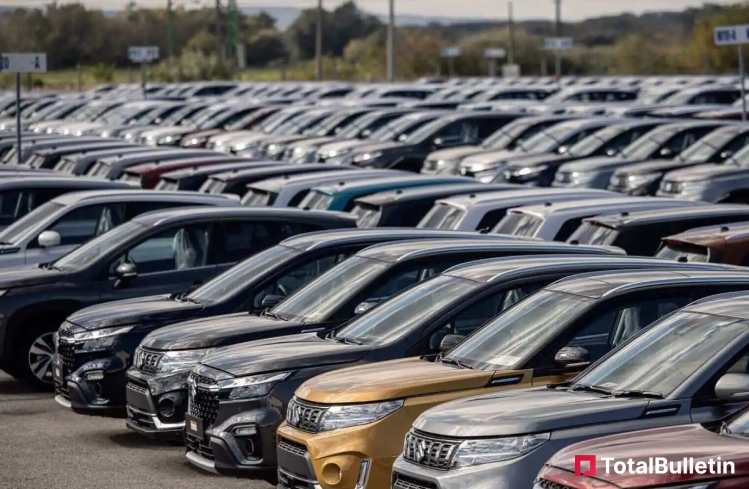Auto stocks have been in the fast lane over the past one year. The Nifty Auto index has vroomed more than 73 per cent in the past 12 months, with all its constituents delivering positive returns. Tata Motors DVR led the pack, with over 200 per cent returns. Next on the list were Bajaj Auto and Tata Motors, which rallied over 130 per cent in a year.
So what’s boosting the rally?
As per analysts, the following can be the reasons for the rally:
- Substantial volume expansion in selected pockets.
- Improving cost metrics across the industry.
- Auto OEMs are witnessing healthy annual volume growth across segments in Q3 FY24.
- Improvement in realisation.
- Implementation of premiumisation strategies.
- Improving pricing strategies while keeping attractive discounts.
- Favourable margin performance.
- Increased demand for commercial vehicles (CV).
- Increased disposable income for Indians made the passenger vehicle segment soar, with auto sales booming month over month.
- Growing electric vehicle (EV) market.
Which segment should one consider for serious wealth creation: PVs, CVs, two-wheelers, or EVs?
Dhruv Mudaraddi, Research Analyst, StoxBox, who specialises in the auto segment, said that while challenges lie ahead for the automotive sector, growth and wealth creation opportunities exist in the passenger vehicles (PV) and 2W sectors.
In the 2W space, Mudaraddi prefers Hero MotoCorp, and from the PV space, the analyst is positive on Maruti Suzuki India Ltd.
Vaibhav Jain, Share.Market Research (PhonePe Wealth), prefers the EV segment from a long-term perspective due to the following reasons:
- Government’s commitment to advancing the EV ecosystem.
- The extension of FAME II subsidies beyond March 2024 is poised to sustain adoption rates and instill optimism for ongoing subsidy assistance.
- Initiatives to enhance payment security for electric bus operators will expedite the deployment of electric buses.
- A heightened focus on charging infrastructure is poised to alleviate a significant bottleneck in the EV value chain, with an augmented emphasis on rooftop solar integration.
Meanwhile, Ashwin Patil, Equity Research Analyst at LKP Securities Ltd remained positive on the sector with a cautious view as a softer FY25 for CVs and PVs may be witnessed.
As per Saji John, a research analyst with Geojit Financial Services, Nifty Auto is largely trading in line with its long-term average, factoring in double-digit earning growth over FY24E–FY26E. Hence, Geojit maintains a neutral view of the PV and CV segments and a positive view of 2Ws.
How will the auto sector perform going ahead?
For Jain, the Indian auto sector looks promising, driven by sustained economic growth and government initiatives to enhance infrastructure and facilitate EV adoption. Additionally, as disposable income rises, demand across various automotive segments will remain strong.
Whereas for StoxBox’s Mudaraddi, there are challenges for the sector, such as a high base in certain segments and macro headwinds slowing growth in others.
Segment-wise outlook
2W
As per analysts, despite challenges posed by high inflation, the 2W segment is anticipated to exhibit robust growth in FY25.
This growth is expected to be underpinned by strong underlying demand drivers, including increased urbanisation, rapid electrification through government incentive policies, new product launches, transportation needs, and a preference for affordable mobility solutions.
Additionally, a favourable monsoon could stimulate growth in the rural segment in the latter half of the year. Despite potential softness due to elections, a robust marriage season is expected to offset these effects.
PVs
The passenger vehicle segment is poised for steady but moderate mid-to-high single-digit expansion in FY25, driven by the strong performance of the utility vehicle segment, changing consumer preferences towards premiumisation, and regulatory incentives for electric vehicles.
However, the impact of an election year coupled with a normal monsoon forecast poses a mixed picture for the first half of FY25.
A significant uptick is expected in the second half of the year, especially in the SUV segment. Nevertheless, challenges persist, such as underperformance in the small car segment due to shifting consumer preferences and slow growth in semi-urban incomes, which would limit the upside in the PV industry in the medium term.
CVs
The CV sector and tractor sectors are expected to face challenges, with negative growth projected for FY25, attributable to a high base and cyclicality within the sector.
EVs
Geojit Financial Services’ John believes that in the short to medium term, a significant attraction in the electric 2W, PV, and bus segments can be witnessed due to multiple launches, PLI schemes, and government initiatives to boost electric bus adoption.

